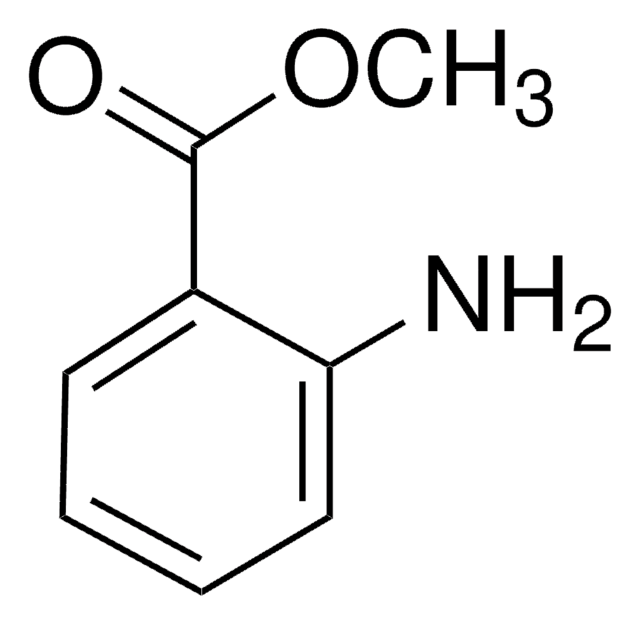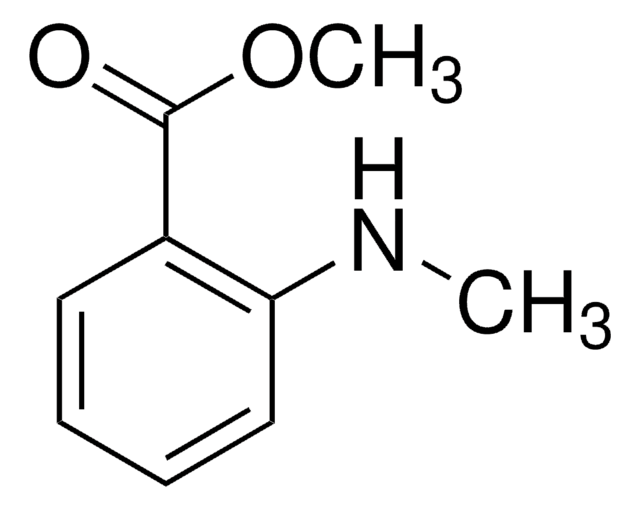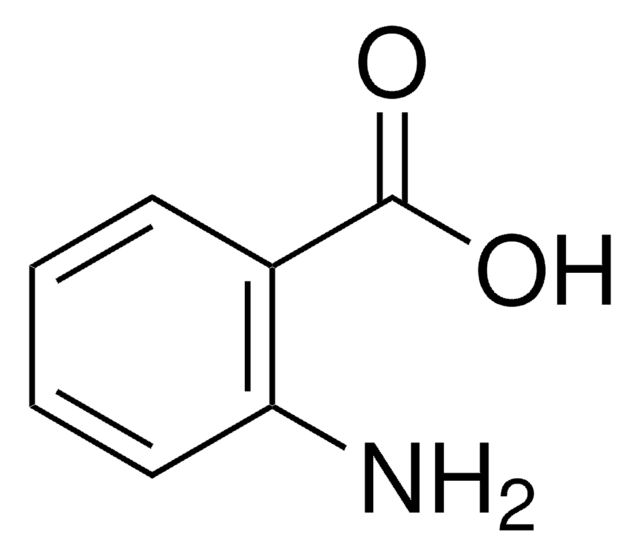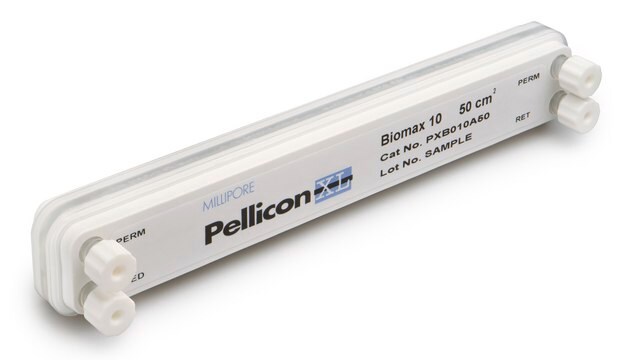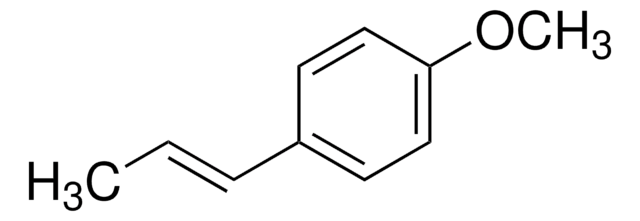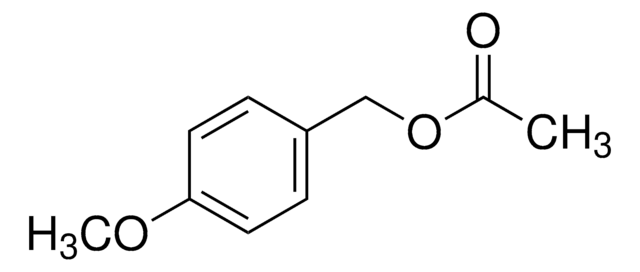Kluczowe dokumenty
W271810
Dimethyl anthranilate
natural, ≥98%, FG
Synonim(y):
Methyl N-methylanthranilate
About This Item
Kosher
natural
Polecane produkty
klasa czystości
FG
Kosher
natural
Poziom jakości
agency
meets purity specifications of JECFA
zgodność regionalna
EU Regulation 1334/2008 & 178/2002
FDA 21 CFR 172.515
Próba
≥98%
charakterystyka ekologicznej alternatywy
Less Hazardous Chemical Syntheses
Use of Renewable Feedstocks
Learn more about the Principles of Green Chemistry.
sustainability
Greener Alternative Product
współczynnik refrakcji
n20/D 1.579 (lit.)
bp
256 °C (lit.)
mp
17-19 °C (lit.)
gęstość
1.126 g/mL at 25 °C (lit.)
Zastosowanie
flavors and fragrances
Dokumentacja
see Safety & Documentation for available documents
alergen pokarmowy
no known allergens
kategoria ekologicznej alternatywy
Organoleptyczne
grape skin; fruity; floral; sweet
ciąg SMILES
CNc1ccccc1C(=O)OC
InChI
1S/C9H11NO2/c1-10-8-6-4-3-5-7(8)9(11)12-2/h3-6,10H,1-2H3
Klucz InChI
GVOWHGSUZUUUDR-UHFFFAOYSA-N
Szukasz podobnych produktów? Odwiedź Przewodnik dotyczący porównywania produktów
Opis ogólny
Zastosowanie
- Effects of Dimethyl Anthranilate-Based Repellents on Behavior, Plumage Condition, Egg Quality, and Performance in Laying Hens.: Investigates the impact of Dimethyl Anthranilate-based repellents on laying hens, focusing on their behavior, plumage condition, egg quality, and overall performance (Terčič et al., 2020).
- A simple method to discriminate Guangchenpi and Chenpi by high-performance thin-layer chromatography and high-performance liquid chromatography based on analysis of dimethyl anthranilate.: Presents a chromatographic method to differentiate between Guangchenpi and Chenpi, emphasizing the role of Dimethyl Anthranilate in this differentiation process (Li et al., 2019).
Hasło ostrzegawcze
Warning
Zwroty wskazujące rodzaj zagrożenia
Zwroty wskazujące środki ostrożności
Klasyfikacja zagrożeń
Eye Irrit. 2
Kod klasy składowania
10 - Combustible liquids
Klasa zagrożenia wodnego (WGK)
WGK 1
Temperatura zapłonu (°F)
216.7 °F - closed cup
Temperatura zapłonu (°C)
102.6 °C - closed cup
Środki ochrony indywidualnej
Eyeshields, Gloves, type ABEK (EN14387) respirator filter
Wybierz jedną z najnowszych wersji:
Masz już ten produkt?
Dokumenty związane z niedawno zakupionymi produktami zostały zamieszczone w Bibliotece dokumentów.
Nasz zespół naukowców ma doświadczenie we wszystkich obszarach badań, w tym w naukach przyrodniczych, materiałoznawstwie, syntezie chemicznej, chromatografii, analityce i wielu innych dziedzinach.
Skontaktuj się z zespołem ds. pomocy technicznej